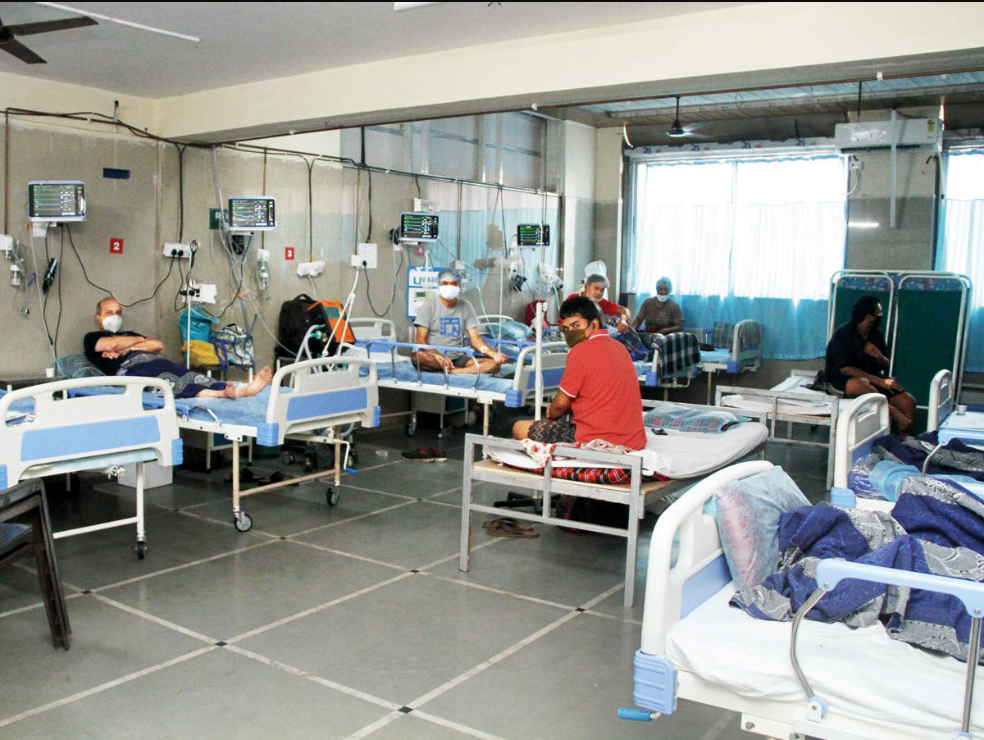Novel XBB.1.16 Covid subtype spreads as cases increase

A new kind of Covid-19 is on the increase. Four of the five states that have discovered XBB.1.16 during the past three weeks have reported increased cases.
Officials from the Ministry of Health have stated that there is no evidence of a rise in disease severity, hospitalisation, or fatality.
XBB.1.16 is regarded an interesting variety due to its improved transmissibility, which enables it to displace other dominant variants.
The mutation was detected in 204 patient samples in March, up from 138 in February and just two in January, according to data from India’s Covid-19 genome sequencing collaboration, INSACOG.
Cases of the new variant have been reported from Pune, Mumbai, Thane, Sangli, Ahmednagar, Amravati, and Nandurbar. Of the total 344 XBB.1.16 sequences isolated to date, the highest number (105) has been reported from Maharashtra, followed by Mumbai, Thane, Sangli, Ahmednagar, Amravati, and Nandurbar.
This was followed by 93 Telangana sequences, 57 Karnataka sequences, 54 Gujarat sequences, and 19 Delhi sequences. After XBB.1.16, XBB.1.5 and XBB.2.3 are the subvariants with the highest prevalence among patient samples, according to INSACOG data.
“When a pandemic illness often approaches endemicity, variations increase. Is Covid-19 now an epidemic? We are not saying that, but it is on its way,” said a senior Health Ministry official who requested anonymity.
Eight states have reported a rise in Covid-19 cases: Maharashtra, Gujarat, Karnataka, Kerala, Tamil Nadu, Himachal Pradesh, Rajasthan, and Delhi.
The number of Covid-19 cases in Maharashtra jumped from 377 the week ending March 9 to 790 the week ending March 16 and to 1,650 the week ending March 23. At the same time period, the positivity rate — the proportion of samples that test positive — jumped from 1.05 percent to 4.49 percent.
This optimism rate is significantly greater than the national average of 1% for the same week.
In Gujarat, there were 115 cases during the week that ended on March 9, 346 during the week that ended on March 16, and 1,093 during the week that ended on March 23.
During the same time frame, the positive rate in the state climbed from 0.32 percent to 2 percent.
The number of Covid-19 cases in Kerala jumped from 445 the week ending March 9 to 601 the week ending March 16 and 979 the week ending March 23. The state’s positive rate increased from 2.02 percent to 4.17 percent.
The number of reported cases in Karnataka rose from 539 the week ending March 9 to 603 the week ending March 6 and 692 the week ending March 23. The state’s rate of positive rose from 2.33 percent to 3.08 percent.
The number of cases in Tamil Nadu jumped from 186 the week ending March 9 to 270 the week ending March 16 and 480 the week ending March 23. Throughout this era, the state’s positivity rate rose from 0.89 percent to 2.26 percent.
The number of reported cases in Delhi increased from 76 in the week ending March 9 to 159 in the week ending March 16 and 411 in the week ending March 23. The rate of positive rose from 0.7% to 3.76 %.
The number of cases in Himachal Pradesh rose from 44 the week ending March 9 to 128 the week ending March 16 and 238 the week ending March 23. The state’s positive rate increased dramatically from 2.48 percent to 7.10 percent. “A high positivity rate indicates that more individuals with the virus are not being tested. The states with a high positive incidence have been instructed to expand testing, according to a senior health ministry official.
The number of cases in Rajasthan increased from 24 for the week ending March 9 to 55 for the week ending March 16 and 157 for the week ending March 23. Over this time, the positivity rate in the state rose from 0.31 percent to 1.43 percent.
The states that reported an increase in instances were instructed to monitor severe acute respiratory infections and influenza-like diseases. They have been instructed to transmit all positive RT-PCR samples for genetic sequencing, to track positive patients, to treat them as necessary, and to push individuals to engage in Coid-19-appropriate conduct. States have also been instructed to prioritise precautionary doses. According to figures from the ministry of health, more than ninety percent of individuals have gotten both primary vaccine doses, but coverage for the third precautionary dosage has remained at 27 percent.
In addition, the official from the Ministry of Health stated that there will likely be another drill to assess if hospitals are equipped to treat Covid-19 instances.
Wednesday, the Prime Minister convened a high-level conference to examine the Covid-19 and influenza situation in the country. During the meeting, he instructed officials to improve whole genome sequencing of the Covid-19 virus in order to follow emerging strains and conduct effective surveillance of influenza-like diseases and severe acute respiratory infections. Also, he recommended individuals to practise respiratory hygiene and Covid-19-appropriate behaviour. The availability and costs of 20 primary Covid Medicines, 12 additional pharmaceuticals, eight buffer drugs, and one influenza drug are being monitored, he was informed.
Related Posts
| 76 samples of the novel Covid variant XBB1.16 were discovered in India, according to INSACOG data. |
| India to elevate Global South priorities: Mandaviya |



